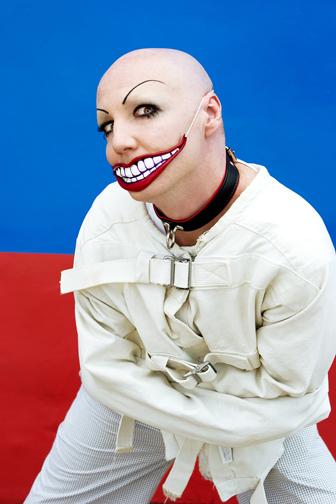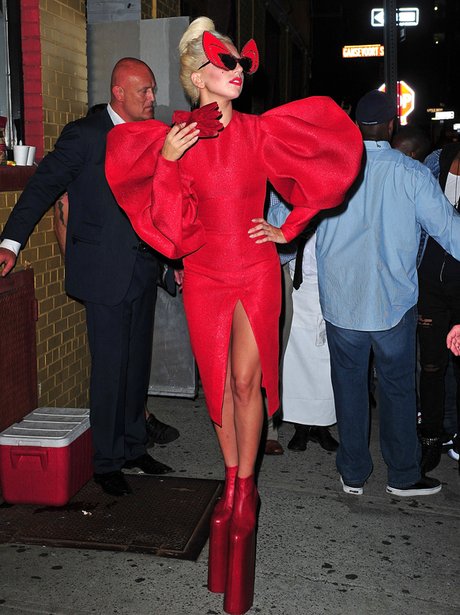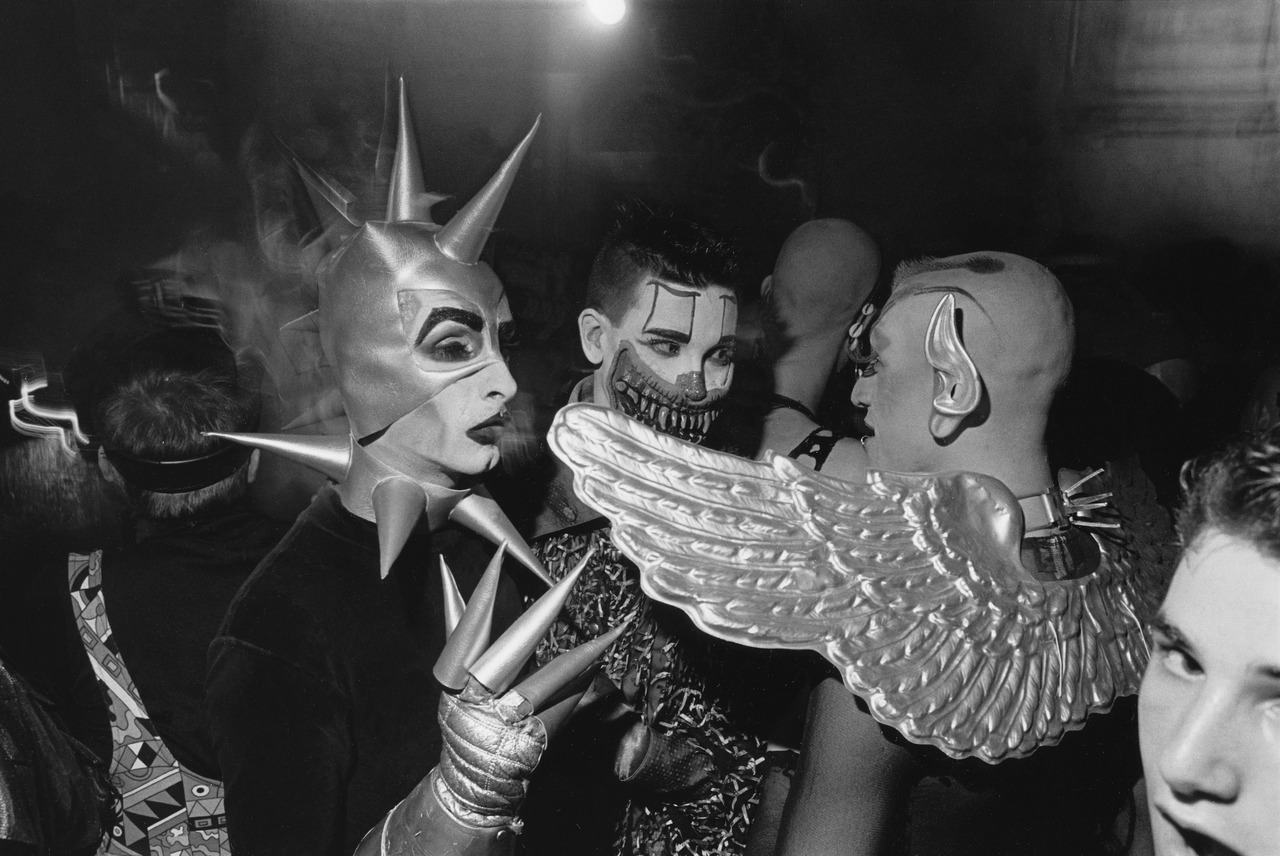In the 80’s and 90’s, the Club Kids, a youth group of dance personalities led primarily by party promoter Michael Alig, were a defining force in New York’s underground party scene. One Club Kid who can be commonly recognized by those born outside of the Club Kid era is RuPaul. RuPaul is a drag queen especially noted for producing the drag competition show, RuPaul’s Drag Race. The group is notable for experimentation, flamboyant persona’s, and outrageous looks. In 1988, Michael Musto wrote,
They … are terminally superficial, have dubious aesthetic values, and are master manipulators, exploiters, and, thank God, partiers.
Drug use quickly influenced the group, eventually leading to the conviction of Michael Alig and his roommate Robert D. “Freeze” Riggs for the murder of a fellow Club Kid member, Andre “Angel” Melendez, over a drug debt. Regardless, the New York club scene became a safe haven for marginalized groups to reflect a true expression of themselves. The encouragement of experimentation led to a pushing of boundaries politically, musically, and aesthetically. Up until this point, Mayor Rudy Giuliani of New York cracked down on nightclubs, further marginalizing and hindering the expression of homosexuals, genderqueer folk, and people of colour. Michael Alig, along with his mentor James St. James, created a profound community, centred around the club Limelight, for the nation’s misfits, encouraging unique self-expression and defining a clear political statement, shaping the electronic/hip-hop music style, and creating a never before seen look.

This aesthetic is still extremely influential on runways and in LGBTQ+ fashion. Nightlife for Club Kids consisted of an absolute fluidity of gender, self-made outfits, and an iconic truth of self. The looks of Club Kids were extremely imaginative, far more extreme than runway looks at the time. Their fearlessness inspired fashion, notably influencing designer John Paul Gaultier, who frequently visited Limelight.
Vintage is resurfacing, and it has been for some time. The aesthetic of the 90’s is bright, patterned, and often weird. This utilization of design and mixing of aesthetics was extremely prevalent in New York nightclubs, shaping the bright and glittery 90’s era described today. This resurface has allowed the aesthetic to thrive in commercial style and in high fashion. Frankly, Club Kids’ makeup was odd, often consisting of bright colours and harsh lines. In June of 2018, Crayola released a makeup collection that shocked the internet. Although the quality of the products is questionable, the promo pictures were stunning and mimicked a familiar 90’s aesthetic, showing that makeup is for everyone, including people of colour and men.

In high fashion, designers like Gucci have put a twist on the eccentric style, featuring curious patterns, extravagant accessories, and lot’s of shine in recent collections. For his 30th birthday, Frank Ocean threw a Paris is Burning themed birthday party, where he was seen wearing large Gucci pineapple sunglasses and net crystal pants, priced currently on Gucci’s website at $4750. Although that doesn’t necessarily follow the DIY of Club Kid aesthetic, it definitely follows the unconventional style and fabulousness.

Designers may not purposely gain inspiration from Alig and the often childish “lunchbox” aesthetic of the Club Kids, but the design choices and the ethos of fabulousness, fame, and flash is rooted in the iconic looks of New York. The persona of the Club Kid era is recognized with an attitude of “being famous for being famous,” which is still extremely present in the current culture of North America, as the popularity of T.V. reality and social media continues to rise.
In particular, Lady Gaga is credited for bringing forward a new, but familiar Club Kid style to modern pop culture. Her take on the kiddie aesthetic has brought forward a new group of ‘club kids” in New York, unrelated to Michael, but partiers nonetheless.

Michael Musto described the Club Kid look and persona humorously saying,
We’re a bunch of kids but we’re really bratty kids and we’re doing things that shouldn’t be done by anybody.
One important aspect of the Club Kid aesthetic was the statement behind it. The fashion was boundary pushing, but it was also an outward expression of an oppressed culture. The nightlife was a safe haven for the disenfranchised people of New York to express a unique individuality and sexuality. Underground clubs celebrated differences, exploring the limits of fashion and the Club Kids’ own alienation by blending what Musto describes as,
Japanese anime, fractured fairy tale Mother Goose chic gone amok, apocalyptic chic, and a heavy influence of British outrageous performance art in the person of Leigh Bowery.
Ultimately, the Club Kids achieved their goal… using outrageous stylistic choices as a way to get famous at all costs. Along that road to legendary status, which was often dark and twisted, the Club Kids defined the aesthetic of the 90’s. Their uniqueness allowed their experience to survive today, where the mindset of the Club Kids continue to thrive in an increasingly digital world. These clubs acted as a support system for marginalized groups, allowing those who were alienated to explore their sexuality, gender, and look, ultimately leading to a group of partiers who defined what it means to be unique. Through experimentation, the Club Kids created a persona and especially, an aesthetic that has transcended into modern culture, paving the way for the unique, outlandish, and utterly fabulous stylistic choices that exist today.
Club Kids-







Sources-
Images-
Club Kids Photos 1, 2, 3, 4, 5, 6, 7
A Note from the Author:
I have a lot of admiration for the Club Kids of New York. Obviously, there were some aspects of this party culture that are extremely dark. However, I can respect the individuality of these trendsetters that impacted and continues to impact fashion. Personally, I find commercial fashion… boring, especially for men. I’m someone who genuinely enjoys high fashion and appreciates the art and eccentric style. Not that I’m trying to be pretentious, but the way I look at it, life is very short, and in that confined time I want to do and explore as much as possible. Particularly, commercial men’s fashion lacks a utilization of colour and fabric that I see in women’s clothing from the same brands. It’s often disheartening to walk into a huge women’s section only to find nothing upstairs. Not that this is a huge issue because in theory, I could shop wherever I wanted, in the men or women section. However, in practice, androgyny comes with a lot of ridicule. I could never dress like a Club Kid going to school, but a part of me wish I could because simply, why not. Looking at the pictures and seeing such odd outfits and makeup styles was exciting. This is why I admire and chose to write about the Club Kids. The underground nightlife in New York was completely judgement free. Androgyny, fluidity, and outfits that were straight-up weird were accepted because to them and many others, gender was a social construct that didn’t need to be followed. The celebration of experimentation is what I think was the most iconic aspect of the Club Kids. That willingness to push boundaries changed the aesthetic of the time and continues to influence modern fashion. Noticeably, I’m very fortunate to even be in a position to complain about the selection of clothes affordable brands have to offer, and I’m not trying to be hypercritical because obviously not everyone is going to want to shave their eyebrows and wear gas-masks in public. However, I just hope that the unquestioned acceptance exemplified by the Club Kids of New York becomes more widespread, not just for fashion, but for the lives and choices of others. Truly, life is short… so dress how you want, don’t let others disrespect your uniqueness, and just party!
